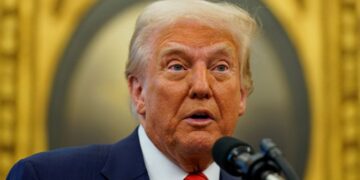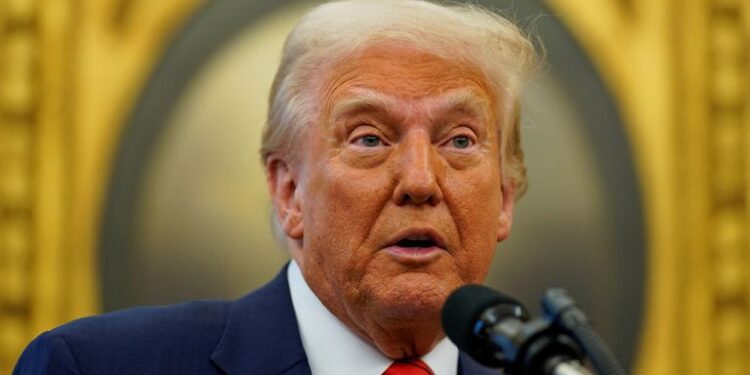Washington DC: In a significant move to reshape U.S. trade policy, President Donald Trump revealed that starting Monday, the United States will impose a 25% tariff on all steel and aluminium imports. This new levy will be in addition to other metal tariffs expected to be unveiled later in the week.
Speaking to reporters aboard Air Force One on Sunday en route to the NFL Super Bowl in New Orleans, Trump outlined his plans to announce reciprocal tariffs as early as Tuesday, which would take effect almost immediately. However, he did not specify which countries would be affected by the reciprocal tariffs. Trump emphasized that the U.S. would match tariff rates imposed by other nations, stating, “And very simply, it’s, if they charge us, we charge them.”
During his first term as president (2016-2020), Trump had previously imposed a 25% tariff on steel and a 10% tariff on aluminium. However, he later granted several countries, including Canada, Mexico, and Brazil, duty-free quotas. His successor, President Joe Biden, extended these quotas to include Britain, Japan, and the European Union. Despite these measures, U.S. steel mill capacity utilization has decreased in recent years.
According to official data, Canada, Brazil, and Mexico are the largest sources of steel imports to the U.S., followed by South Korea and Vietnam. Canada is also the largest supplier of primary aluminium to the U.S., accounting for 79% of total imports in the first 11 months of 2024. Mexico plays a significant role in supplying aluminium scrap and alloys to the U.S.
Trump stated that he would hold a press conference on Tuesday or Wednesday to provide more details about the reciprocal tariff plan. He reiterated his goal of ensuring that the U.S. is treated fairly by other countries. “We’re going to make sure we’re treated evenly with other countries,” he added.
Trump has long expressed dissatisfaction with the European Union’s 10% tariff on auto imports, which is significantly higher than the U.S. rate of 2.5%. He frequently criticizes Europe for not accepting American cars while shipping millions of vehicles to the U.S. every year. Meanwhile, the U.S. maintains a 25% tariff on pickup trucks, a crucial source of revenue for Detroit-based automakers like General Motors, Ford, and Stellantis’ U.S. operations.
The U.S. currently has a trade-weighted average tariff rate of about 2.2%, according to World Trade Organization data. This is considerably lower than countries such as India (12%), Brazil (6.7%), Vietnam (5.1%), and the European Union (2.7%). These figures underscore the disparity in tariff rates globally, contributing to the rationale behind Trump’s push for reciprocal tariffs.
Disclaimer: This is an AI-generated live blog and has not been edited by Localtak staff.
Also Read: X User’s Witty ‘Mumbai Map’ Response to BMC’s Request for Dug-Up Road Location















 Categories
Categories









